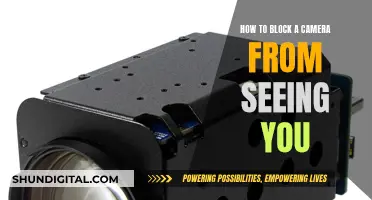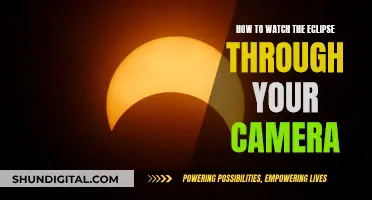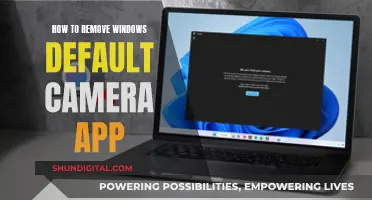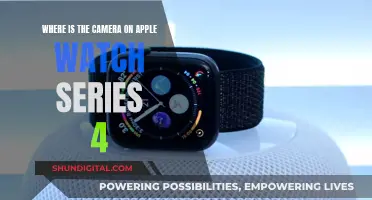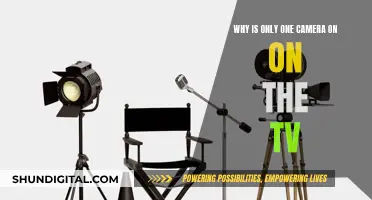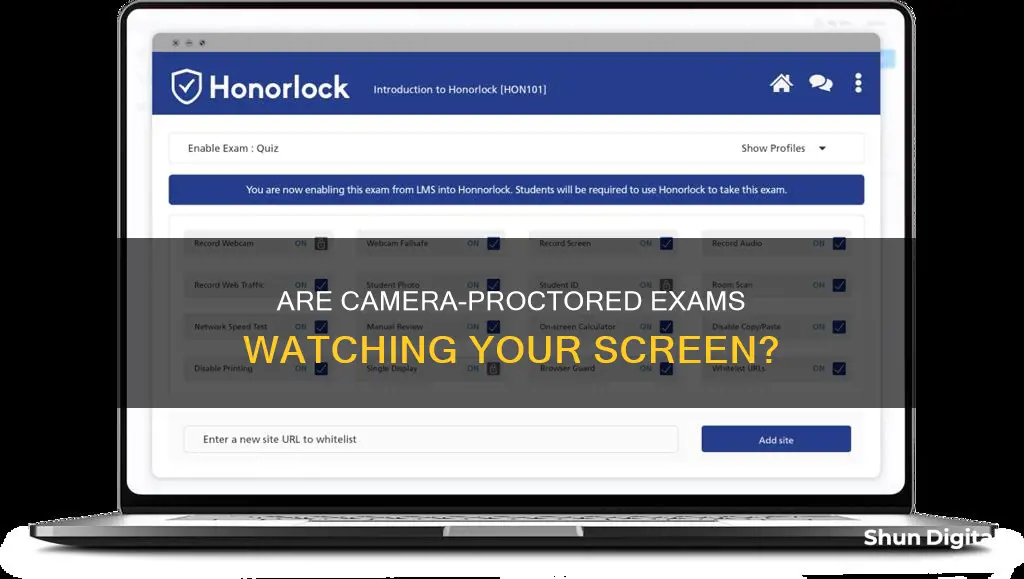
With the shift towards online education, proctoring software has become a necessity for universities and companies offering online courses, certifications, and degrees. Proctoring tools have evolved to address the surge in online education and ensure academic integrity. These tools use hardware devices such as computers and webcams to monitor students during exams, verifying their IDs and scanning for any unauthorised resources or individuals in the room. While the specifics may vary, the core function of proctoring software is to record and observe the exam process, raising the question: do these tools also monitor the test-taker's screen?
| Characteristics | Values |
|---|---|
| Camera View | Your face, from chin to forehead, must be in the camera view at all times. |
| Talking | Talking or whispering aloud is not permitted unless you have an accommodation. |
| Testing Area | No one else is allowed in your testing location with you. |
| Noise | Additional noise, including other people talking to you, is not allowed. |
| Eye Contact | If you aren't allowed any materials, your eyes should stay on the screen at all times while testing. |
| Materials | Only use the materials your instructor allows. |
| Pictures/Screenshots | Taking pictures or screenshots during the exam is not permitted. |
| Copying and Pasting | The system will capture all events of copy and pasting that occur. |
| Virtual Machine | Virtual machines are not permitted and can be detected through the pre-exam system check. |
| Secondary Monitors | Only one monitor attached to one computer is allowed. |
| ID Verification | A valid photo ID is required for identity verification. |
| Room Scan | The proctoring software will scan the room to identify the user and any additional individuals or materials. |
| Screen Sharing | Screen sharing is required for remote proctoring. |
What You'll Learn
- Proctoring software can detect other people or resources in the room
- Proctoring tools can authenticate the identity of the student taking the exam
- Live online proctoring involves a human proctor monitoring the exam in real-time
- Recorded proctoring is monitored, recorded, and played back by a proctor to check for cheating
- Advanced automated proctoring is the most sophisticated method, with software picking up on potential instances of cheating

Proctoring software can detect other people or resources in the room
The proctoring software works in conjunction with a webcam to monitor the student's behaviour and environment during the exam. This includes detecting suspicious behaviours such as talking to others, looking off-screen at resources, using phones or other devices, and tab switching. Advanced proctoring software can also perform a facial recognition scan to verify the identity of the student taking the exam. This is done by comparing the student's face with their photo ID and specific identification metrics.
Additionally, the proctoring software can record the student's screen during the exam. This allows the instructor to watch the student's screen and see how they completed specific portions of the exam. The software can also detect the speed of keypresses, the duration of time holding the mouse, usage of keys for specific functions, and patterned typing errors. These measurements help develop an automated solution for the individual administering the exam.
Overall, proctoring software has advanced features that can effectively detect other people or resources in the room during a proctored exam. This helps to maintain the integrity of the exam and prevent cheating or suspicious behaviours.
Pairing TV and Camera in GMod: The Ultimate Guide
You may want to see also

Proctoring tools can authenticate the identity of the student taking the exam
One such tool is ProctorU, which is used by over 500 institutions worldwide. ProctorU requires students to take a photo of themselves and their ID for identity verification purposes. Depending on the level of verification required by the institution, students may also be asked to answer randomly generated, public record challenge questions, or type out a paragraph of text that will be checked against a pre-existing typing test.
Another method of identity verification is through dynamic keystroke analysis. This involves measuring characteristics such as the length of time it takes to type a particular word or phrase, and the length of time a key is pressed. According to KeyTrac, a major keystroke analysis company, only two people in 10,000 have similar typing behavior.
Biometric analysis is another method of identity verification that relies on physical characteristics of the student, including hand-drawn passwords. BioSig, a popular biometric analysis company, uses hand-drawn passwords to verify identities in higher education, financial services, and healthcare industries.
By using a combination of live proctoring and identity verification tools, institutions can ensure a secure examination environment while adhering to federal regulations.
LG TVs: Camera Features and Your Privacy
You may want to see also

Live online proctoring involves a human proctor monitoring the exam in real-time
The student will likely be required to download an extension or application to take the exam. They will also need to have a camera and microphone and be in a private, well-lit room with no one else around. The proctor will ask to see the student's workspace and may ask them to show their computer monitor. The student may also be asked to show the four walls of their room via their webcam.
Live online proctoring allows for a much lower candidate-to-proctor ratio than in-person proctoring, so the level of observation can be very close. The downside is that the cost will be higher for longer exams. However, there are savings to be made by not having to provide test centres and in-person invigilators for each exam.
Live online proctoring is a good option for high-stakes exams where a human examiner can not only deter cheating but also communicate with students if they have any questions. The human element of this approach to testing means that the proctor can intervene at any time if something goes wrong or a student needs help.
Concealing Your LG 4K TV Camera: A Step-by-Step Guide
You may want to see also

Recorded proctoring is monitored, recorded, and played back by a proctor to check for cheating
Recorded proctoring is a method of video proctoring where a candidate's examination session is monitored and recorded. The recording is then played back by a proctor, who studies the material and evaluates it for academic dishonesty and cheating. This type of proctoring usually provides more automation and has a more robust suite of tools compared to live online proctoring.
During a recorded proctored exam, the candidate's webcam view and screen are recorded throughout the exam. This allows the proctor to review the video footage and identify any instances of cheating or academic dishonesty. The proctor can also detect additional people or resources in the room, such as textbooks, cell phones, and calculators.
In addition to the video recording, recorded proctoring may also involve identity verification and room scans. The candidate's ID is verified by taking a picture of themselves and their photo identification, which is then compared using facial recognition software. The software measures unique individual features and verifies the candidate's identity while maintaining anonymity and privacy.
A room scan is also conducted, where the proctoring software uses video and audio feed to identify the candidate and any additional individuals in the room. This process can also register supplemental materials, such as textbooks, calculators, and other testing materials. It is important to note that the candidate should be the only person in the room during the exam, as having someone else present is a serious violation.
To ensure a smooth recorded proctoring process, candidates are advised to test their equipment beforehand and ensure they have a steady internet connection. They should also be in a well-lit room and position their webcam and smartphone camera to capture their face and surroundings clearly.
Wyze Camera: Is Someone Spying on You?
You may want to see also

Advanced automated proctoring is the most sophisticated method, with software picking up on potential instances of cheating
Advanced automated proctoring is a remote exam monitoring system that uses artificial intelligence (AI) to monitor and review students' exams. This system allows students to take their exams at a time and place that suits them, providing flexibility and convenience. It also offers peace of mind to instructors, who can be confident that the exam is being securely monitored by a reliable source.
Upon starting the exam, the automated proctoring system's AI will record the student's screen, webcam, and microphone to ensure the integrity of the exam. Throughout the exam, the AI will detect and flag any suspicious behaviour or irregularities, such as unusual eye movements, the presence of unauthorised materials, or attempts to navigate away from the test screen. This may include the student failing to maintain eye contact with the screen, talking during the session, or leaving the webcam view. Once the exam is completed, the instructor will be notified of any anomalies and can review the flagged areas to determine if further action is required.
In addition to monitoring the student's behaviour, advanced automated proctoring systems can also include innovative student identification processes to prevent impersonation. This may involve advanced face-to-photo ID and voice matching, as well as randomised questions and two-factor authentication. These measures ensure that the student taking the exam is who they say they are and help maintain the integrity of the examination process.
The use of AI in proctoring software offers several benefits, including eliminating the need for human intervention, reducing costs, and providing an objective and unbiased assessment of the student's behaviour. It also allows for seamless exam planning and scheduling, as well as instant generation of results and certificates. Overall, advanced automated proctoring is a sophisticated and reliable method for ensuring the integrity of online examinations.
Accessing Tesla's Cameras: A Step-by-Step Guide
You may want to see also
Frequently asked questions
Yes, camera-proctored exams require you to share your screen. Your webcam view and your screen will be recorded for the duration of your exam.
You will need a computer/laptop, a smartphone, ID verification documents, a strong internet connection, and, if allowed, external materials such as calculators, textbooks, pens, and paper.
Despite any time loss due to technical issues, it is possible to stay in the exam after the time countdown reaches the end of the session.
If you can't start your exam due to technical issues, you must contact your test organizer to reschedule.


